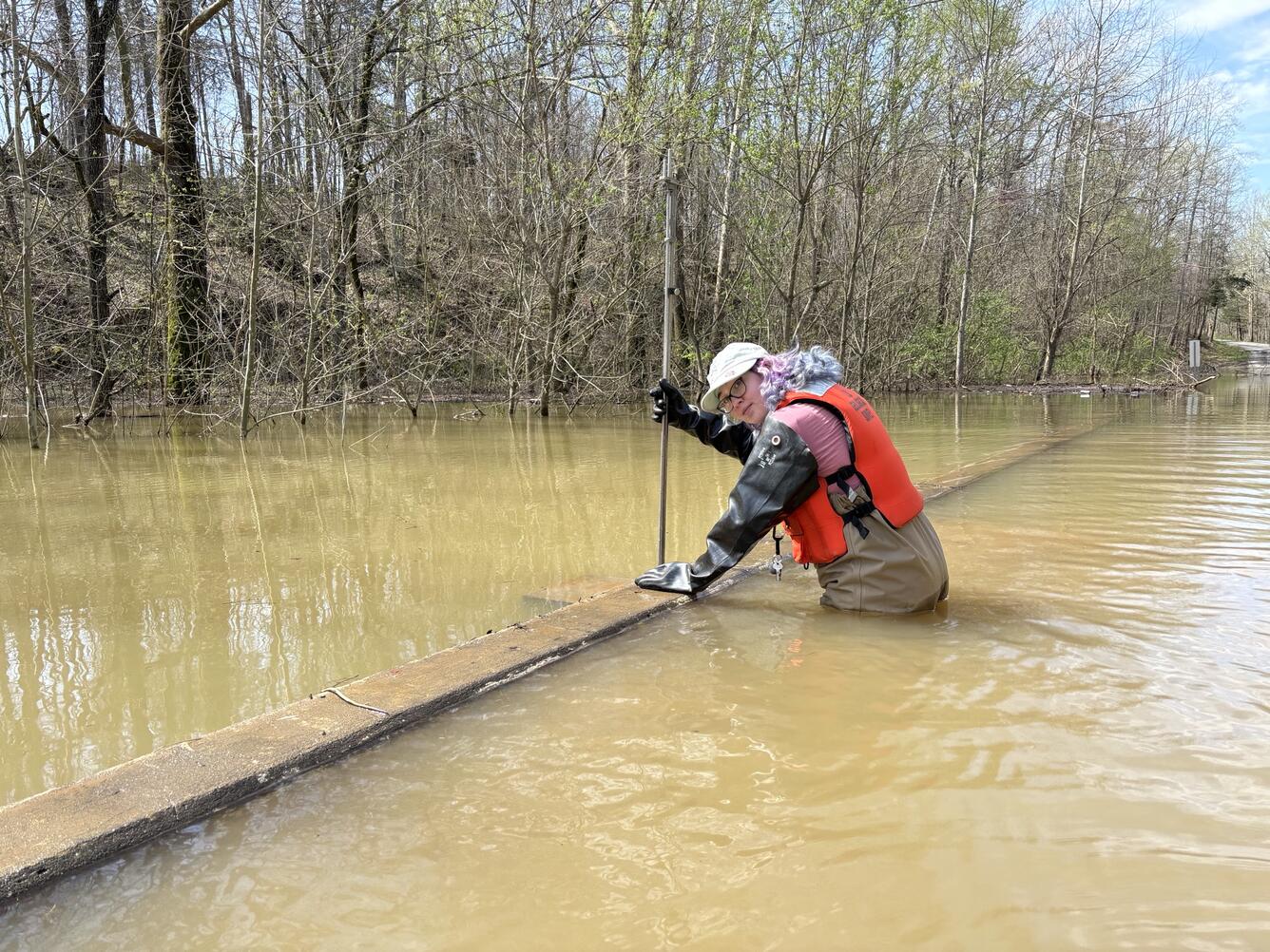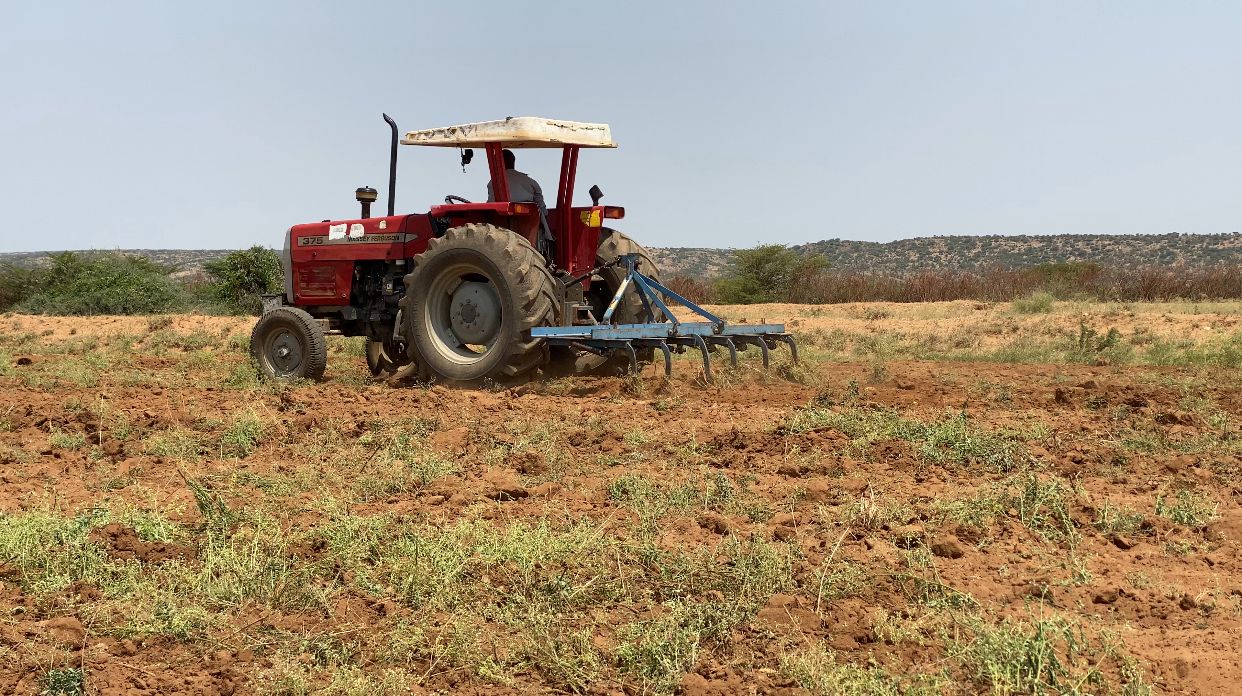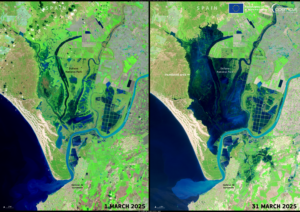What we’re watching: Weekly disaster update, April 14

We know all too well that disaster can strike anytime, anywhere in the world. Some disasters make headlines; others do not. Here at the Center for Disaster Philanthropy (CDP), we monitor the status of disasters worldwide and compile a list of the ones we’re tracking weekly, along with relevant disaster-related media coverage.
Here’s what we’re watching for the week of April 14, 2025.
New or Emerging Disasters
Rebel Attack – Sudan: On April 11, the Rapid Support Forces (one of two factions involved in Sudan’s civil war) began attacking three locations in North Darfur State, including the Zamzam and Abu Shouk camps in El Fasher and the town of Umm Kadada. At least 74 people have been killed, and many more wounded. Some estimate more than 100 people have died. This includes nine staff from former CDP grantee partner Relief International, the only organization left providing health and humanitarian aid in ZamZam camp, home to more than 450,000 internally displaced people. It also includes the medical director and three other medical staff at the Umm Kadada hospital. Since the civil war started in April 2023, nearly 30,000 people have died.
CDP maintains a profile about the crisis in Sudan and has a Sudan Humanitarian Crisis Fund that primarily supports the work of emergency response rooms. On June 17, CDP will host a webinar about hunger in Sudan: How funders can address the growing famine in Sudan.
For more information about the famine crisis in Sudan, see today’s Complex Humanitarian Emergencies section.
Volcanic Eruptions – Multiple Countries: Several volcanoes have seen activity in April.
- Sundhnúk crater series – Iceland: Known as the April Fools’ eruptions, two small eruptions on April 1 caused minimal damage. Following an earthquake swarm earlier in the day, two fissures opened near Grindavik. The first, at 2,300 feet, was outside the town’s protective barrier, while the second took place inside the barrier, very close to the destructive eruption from January 2024. Icelandia said, “This marked the eleventh eruption on the Reykjanes Peninsula since 2021—and the eighth along the Sundhnúk crater series.”
- Kīlauea Volcano – Hawaii, U.S.: Several small lava bursts occurred between April 7 and 9. They are part of an ongoing series that began on December 23, 2024. These bursts were 15 to 30 feet high, much smaller than the 300-foot eruption in December. Experts expect to see tall lava fountains soon, possibly beginning this week.
- Poas Volcano – Costa Rica: On April 8, the Poas volcano erupted again. Scientists believe the recent small eruptions are a sign of a bigger eruption to come. Thick clouds of ash and smoke erupted to heights of more than 300 feet several times. A drone was used in early March to measure soil degassing without needing a person. Authorities are cracking down on companies offering volcano tours despite closing the park since March 26.
- Mount Etna – Italy: On April 8, the Southeast crater began to exhibit Strombolian activity (shooting out explosive bursts, almost like fireworks). Etna is a very active volcano, and last erupted in November 2024.
- Kanalon Volcano – Negros, Philippines: This volcano has seen multiple eruptions in April, including one on April 8 and two on April 14. The most recent eruptions saw plumes of ash and smoke shoot 2,600 feet in the air. The eruption on April 8 had a 13,000-foot plume. Several volcanic earthquakes have also occurred in the past two weeks. Officials feel this signals the possibility of a significant volcanic eruption in a matter of weeks.
- Mount Spurr – Alaska, U.S.: On April 13, the USGS reported several small and shallow volcanic earthquakes on Mount Spurr. From April 4 to 11, there were 55 other earthquakes, similar to the previous week. The Alaska Volcanic Observatory is monitoring for signs of an eruption.
Previous or Ongoing Disasters
Storms and Flooding – Central U.S.: At least 25 people have died, including 10 in Tennessee and six in Kentucky, as more rainfall hit the already battered states in the Central and Midwest parts of the country. And the weather dangers continue, with 32 million people at risk of tornadoes on April 14. Louisville is trying to clean up millions of dollars of damage by May 3, when the eyes of the world will be on the city for the Kentucky Derby.
In Frankfort, Kentucky, the Kentucky River stopped just three inches below the top of the flood walls but still destroyed four dozen homes and several businesses and submerged the town’s water treatment facility. The Buffalo Trace Distillery, the world’s oldest operating distillery, was closed after it flooded. The highest flooding ever recorded for the Frankfort Lock was 48.47 inches in 1978, just above this year’s total of 48.2 inches on April 7.
This visual from the Earth Observatory shows how the rainfall affected the Mississippi River and its tributaries between March 1 and April 7.
Donations to support recovery can be made to CDP’s Disaster Recovery Fund; select “US Tornadoes and Severe Storms” from the dropdown menu.
Flooding – Democratic Republic of the Congo (DRC): The death toll remains at 33 people as water recedes in Kinshasa, DRC. The Ndjili River, which cuts the city of Kinshasa in half, overflowed its banks on April 5 due to heavy rainfall, causing damage and destruction in hundreds of buildings. Almost 3,000 people are in shelters, and nearly four dozen were hospitalized.
Earthquake – Myanmar & Thailand: The earthquake on March 28 in Myanmar generated at least 5.5 billion pounds of debris (2.5 million tonnes). Removing this debris is important to begin the reconstruction process. As many as 10,000 public buildings and homes, including 128 health facilities, were damaged or destroyed.
At least 3,649 people are reported to have been killed by the earthquake, and more than 5,000 people were injured. CNN reports that 15 countries, including China, Russia and Japan, have “boots on the ground” responding to the disaster.
Multiple aftershocks have continued since the earthquake, with more than a dozen earthquakes occurring on April 13-14. One of the biggest, a 5.9M earthquake, occurred on April 13.
Ice Storm – Canada and U.S.: In New England, the Great Lakes and southern Canada, clean-up continues following the massive ice storm on March 29-30. Just 4,500 customers in south-central Ontario and 4,321 customers in Michigan remain without power as of April 14. People have been without power for over two weeks in fairly cold temperatures.
Cholera – Multiple Countries: Since January 2025, 23 countries have reported cholera outbreaks, many of which were carryovers from 2024. Between January 2024 and March 2025, over 178,000 cholera cases were reported in 16 countries in Eastern and Southern Africa.
In the same period, there were also 2,900 deaths, most of them children. The most significant outbreaks are in South Sudan and Angola, and nearly half of the cases were among children (50% in South Sudan and 40% in Angola). While cases decreased in January, deaths increased by 32% in February; there has been a total of 808 deaths in 2025. About one billion people worldwide are at risk for cholera.
Complex Humanitarian Emergencies – Sudan
When a country experiences political conflict, climate shocks, famine, economic challenges or other conditions, it may suffer a complex humanitarian emergency (CHE). CDP maintains complete profiles on several CHEs. Every week, we highlight these and other CHEs hoping to build awareness and philanthropic response.
As the war in Sudan enters its third year on April 15, half the Sudanese population (about 25 million people) faces acute food shortages in the world’s worst hunger crisis, and 638,000 face catastrophic hunger. At least five areas in Western Sudan have declared famine, with 17 more at imminent risk of famine.
According to UN human rights experts, “The displacement of farmers who can no longer cultivate their land has contributed to a vicious cycle of agricultural collapse, hunger, and escalating violence due to competition and scarcity of resources. As farms are destroyed, food supplies dwindle, pushing more people into famine.”
Where established humanitarian organizations can operate inside Sudan, they face disruptions from parties to the conflict. Where they can’t, local community kitchens and emergency response rooms (ERRs) have helped to feed people in need, but 70% of those organizations have closed due to funding shortfalls. The war has destroyed the economy, causing severe inflation, so even where food is available in markets, civilians cannot afford to purchase it. In displacement camps, the only food available is often flour mixed with sugar and water. Adults and children are growing weaker, causing widespread illness. Sadly, RSF forces breached security on April 11 at the Zamzam camp for the internally displaced and killed healthcare workers at the last medical clinic there.
A third of the way into 2025, Sudan has raised only 10% of the funding requested in its humanitarian response plan. Recent cuts to foreign aid have come at the height of Sudan’s humanitarian needs.
CDP maintains a profile about the crisis in Sudan, and has a Sudan Humanitarian Crisis Fund that primarily supports the work of ERRs. On June 17, CDP will host a webinar about this crisis: How funders can address the growing famine in Sudan.

What We’re Reading
- What makes disasters in remote areas different – Foundation for Rural and Regional Renewal
- Emergency Plan – 2025 Easterseals Disability Film Challenge Entry (short video)
- Meltdowns, nightmares and regressions: The L.A. fires are taking a traumatic toll on kids – Los Angeles Times
- NWS halts multilingual weather alerts, impacting non-English speakers during severe storms – Fox 17
- OCHA, the UN’s emergency aid coordination arm, to cut staff by a fifth – The New Humanitarian

A moment of hope… March brought so much rain to Spain’s Doñana National Park and the nearby wetlands that it expanded by 96,000 acres in size. In the park, 68,000 of the 74,100 acres flooded. In February 2025, the Junta de Andaĺucia purchased 27,000 acres of marshland surrounding the park, a UNESCO World Heritage site. The marshland is home to 300,000 migrating birds every year, some of them endangered species.
Copernicus says, “The return of water in this area is a vital step in restoring aquatic ecosystems, promoting the recovery of habitats and amphibian species which were severely impacted by prolonged droughts.”
